The Italian Game is one of the earliest openings to be introduced into the game of chess.
It is a very popular opening among players of all skill levels as it can lead to both slow positional games and sharp attacking ones.
The Italian Game starts with 1. e4 e5 2. Nf3 Nc6 3. Bc4.
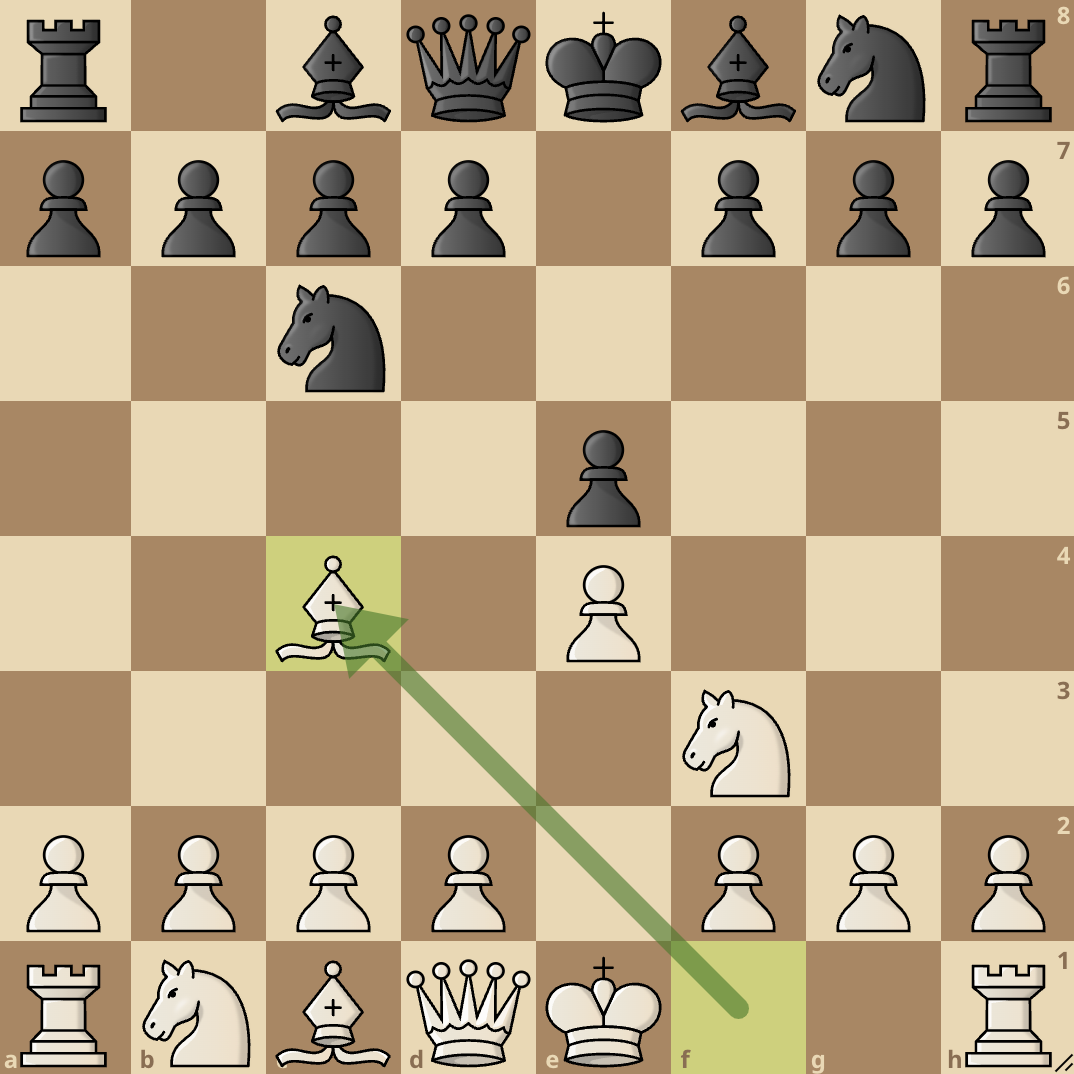
White starts by developing their center pawn and controlling the d5 square.
After Black replies with …e5, White continues with 2. Nf3 attacks the e5 pawn and Black defends with 2…Nc6.
White then develops their light-squared bishop to c4 and from c4, the bishop eyes the f7 pawn.
The f7 pawn is a major weakness in Black’s camp as it is only protected by the Black king.
This is the starting position of the Italian game. While it does not immediately put pressure on the center, White is developing their pieces to squares that may provide an avenue for an aggressive game.
This opening has been around since the 16th century, so different ways of playing it have been developed.
In this article, we will go over the main variations.
Giuoco Piano
1 . e4 e5 2. Nf3 Nc6 3. Bc4 Bc5
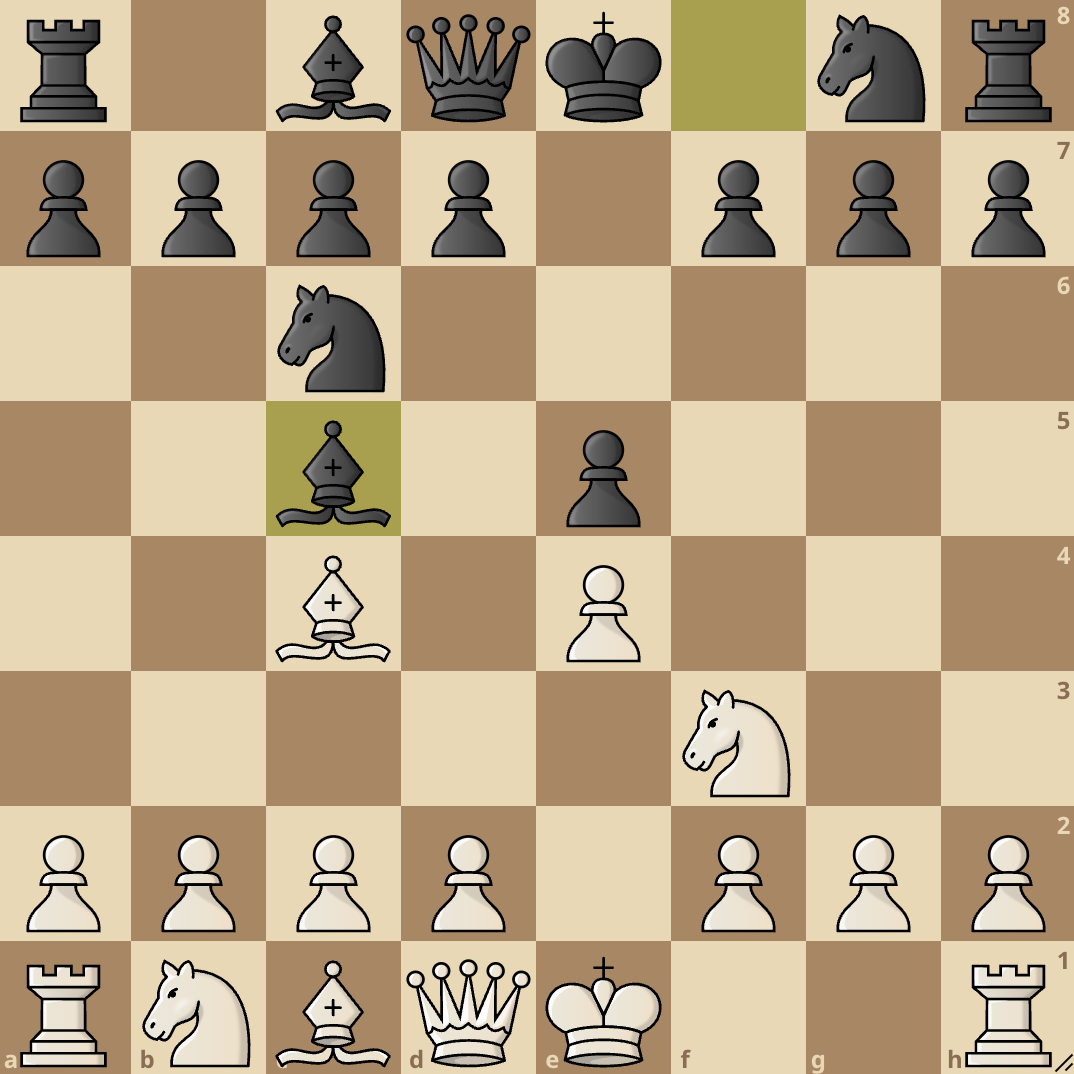
The name of this variation, Giuoco Piano translates to “slow game”.
This shows that this opening has a high tendency to lead to positional games. However, this does not mean that sharp attacking play cannot result from it.
White’s main plan in this opening is to take control of the center with a d4 thrust. White usually prepares it with c3 and then pushes d4.
Giuoco Pianissimo
1. e4 e5 2. Nf3 Nc6 3. Bc4 Bc5 4. d3
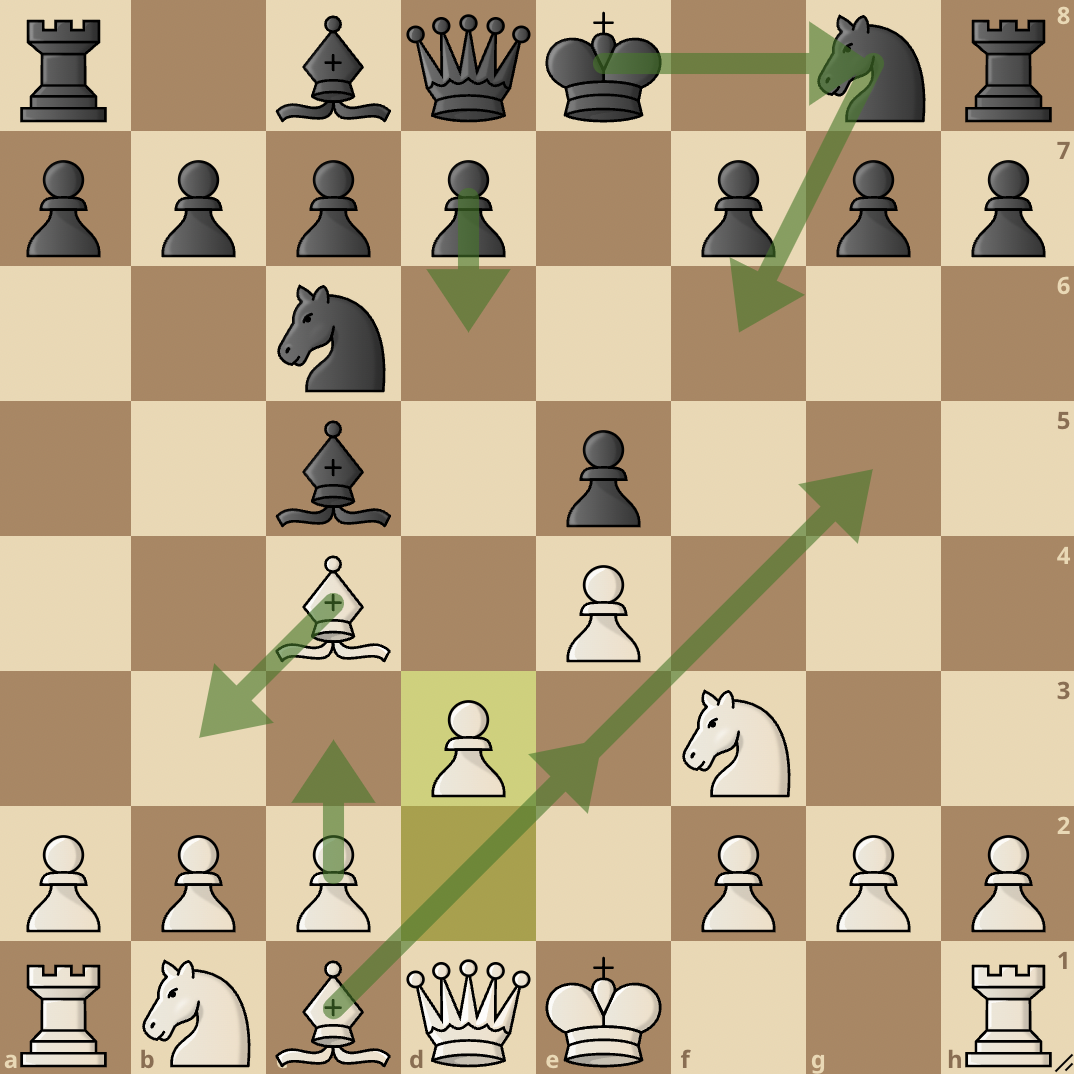
Giuoco Pianissimo is a much quieter version of the Italian Game.
It is a slower version of the Giuoco Piano and it translates to “very slow game”.
White’s plan in the Giuoco Piano is to prepare to strike in the center with d4. However, in the Giuoco Pianissimo, White plays 4. d3, preferring to create a slow solid setup and delaying d4 for a well-timed lunge.
White can also delay the Giuoco Pianissimo by playing c3 and then d3.
In the Pianissimo, after d3, White will often move their light-squared bishop to b3 and then move their dark-squared bishop to e3 or g5 and castle kingside.
Evans Gambit
1. e4 e5 2. Nf3 Nc6 3. Bc4 Bc5 4. b4

The Evans Gambit is a variation that appeals to players who love to play attacking chess.
In this variation, White gives up their b-pawn for quick development and a possible attack on Black’s king.
The Evans Gambit is a very sharp line in the Italian game that promises very exciting play and attacking options for White.
Two Knights Defense
1. e4 e5 2. Nf3 Nc6 3. Bc4 Nf6 4. d3 Bc5 5. 0-0 a6 6. Bb3 0-0
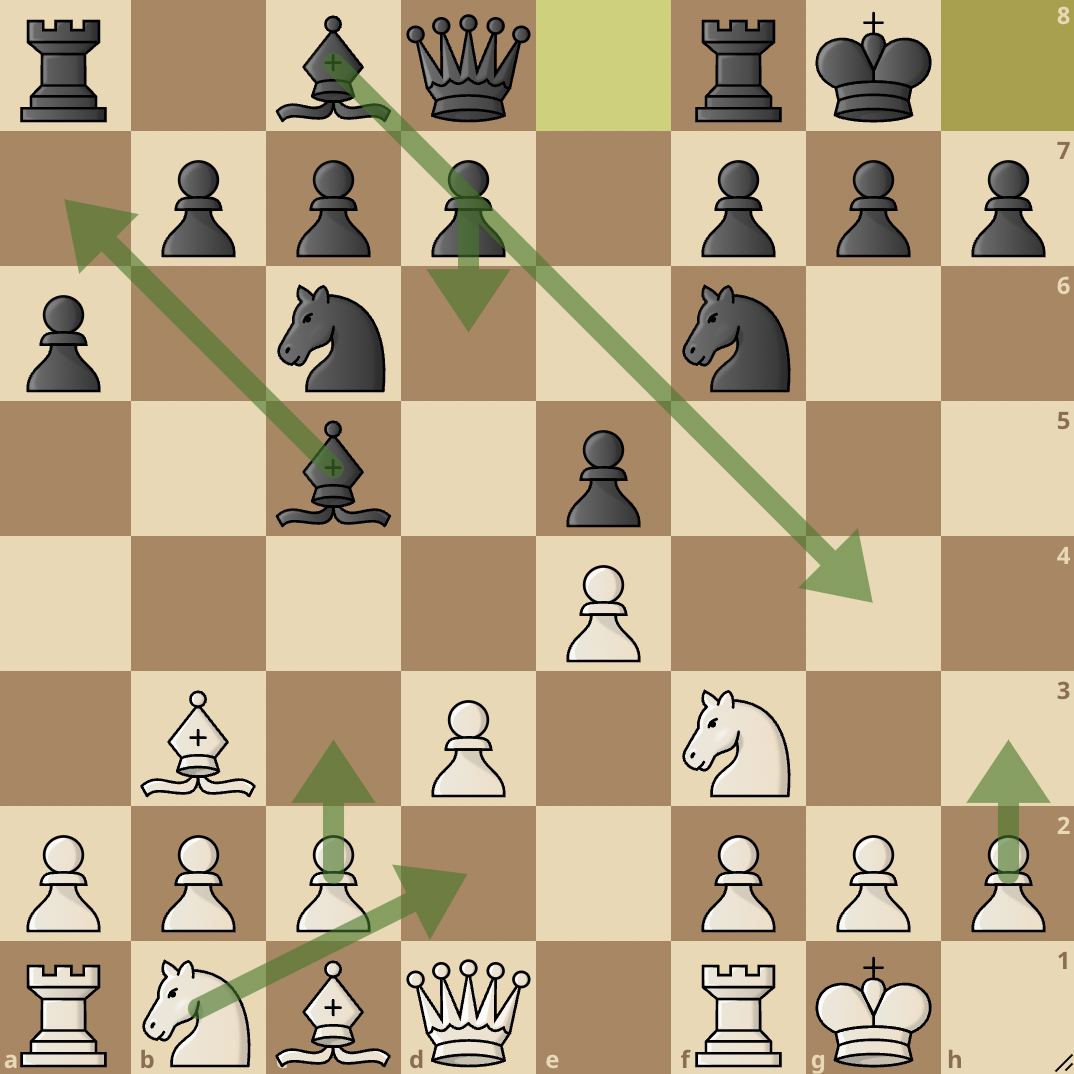
The Two Knights Defense is another way Black can approach the Italian Game.
It features the development of both Black knights, White then plays 4. d3, solidifying their e4 pawn and Black introduces their bishop with Bc5.
White castles and Black plays a6, preparing to push b5 and chase away White’s bishop.
White plays Bb3 and moves the bishop out of the way. Black then castles and the game continues with both sides having a solid position.
The Fried Liver Attack
1. e4 e5 2. Nf3 Nc6 3. Bc4 Nf6 4. Ng5 d5 5. exd5 Nxd5 6. Nxf7
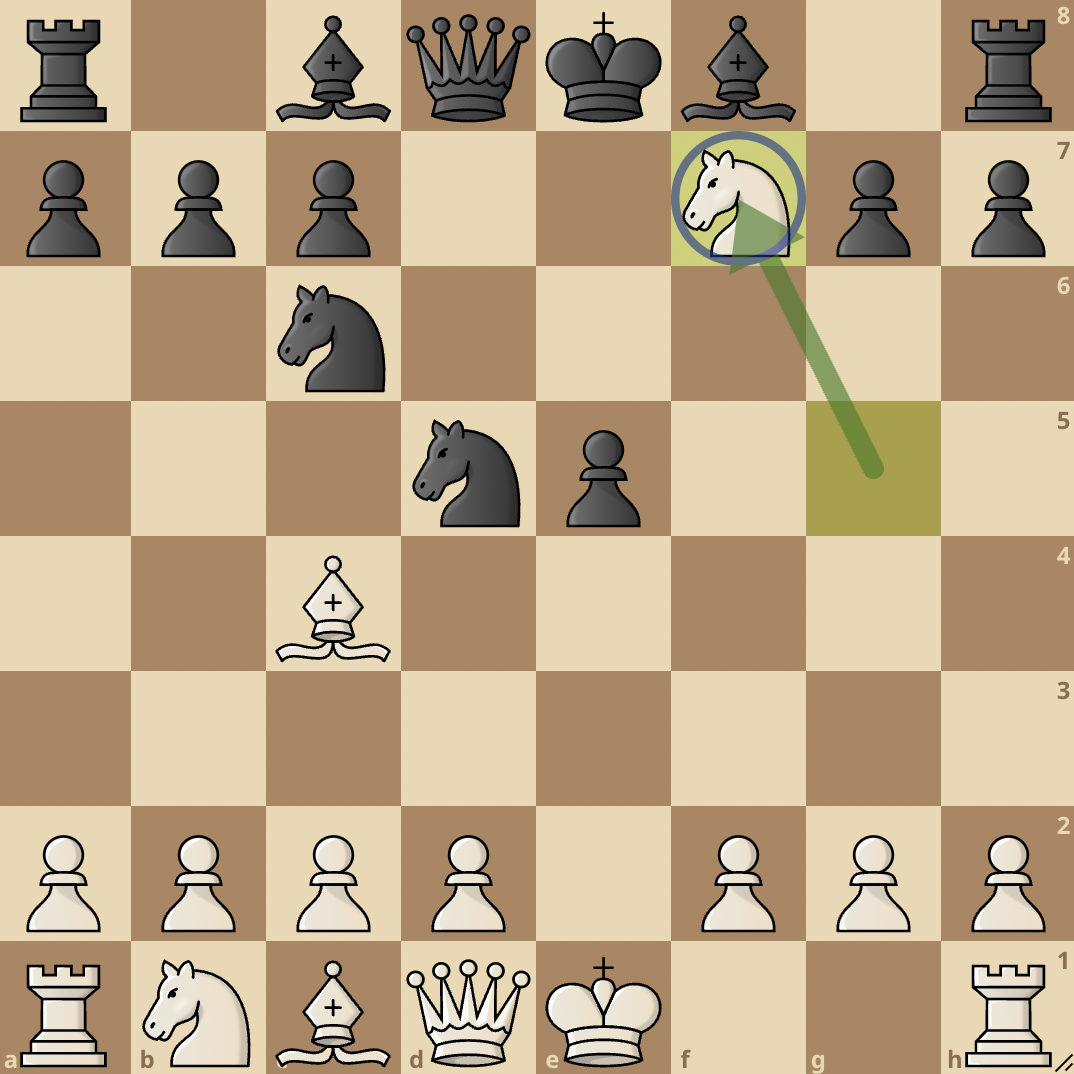
The Fried Liver Attack is a very sharp line that stems from the Two Knights Defense variation of the Italian Game.
After 3…Nf6, White plays the aggressive 4. Ng5, going for the weak f7 pawn. To stop this, Black plays 4…d5. White captures with 5. exd5.
Black can avoid the Fried Liver with 5…Na5, however if they play 5…Nxd5 White can go for the Fried Liver Attack with 6. Nxf7.
By playing Nxf7, White sacrifices their knight for a deadly attack on the black king. Black has to be very careful how they go about this opening as they can easily get checkmated.
An example is after 6…Kxf7 7. Qf3+ and Black plays …Kg8 (…Ke6 is correct) Black is already lost and White has a forced checkmate with 8. Bxd5+ Qxd5 9. Qxd5+ Be6 10. Qxe6#.
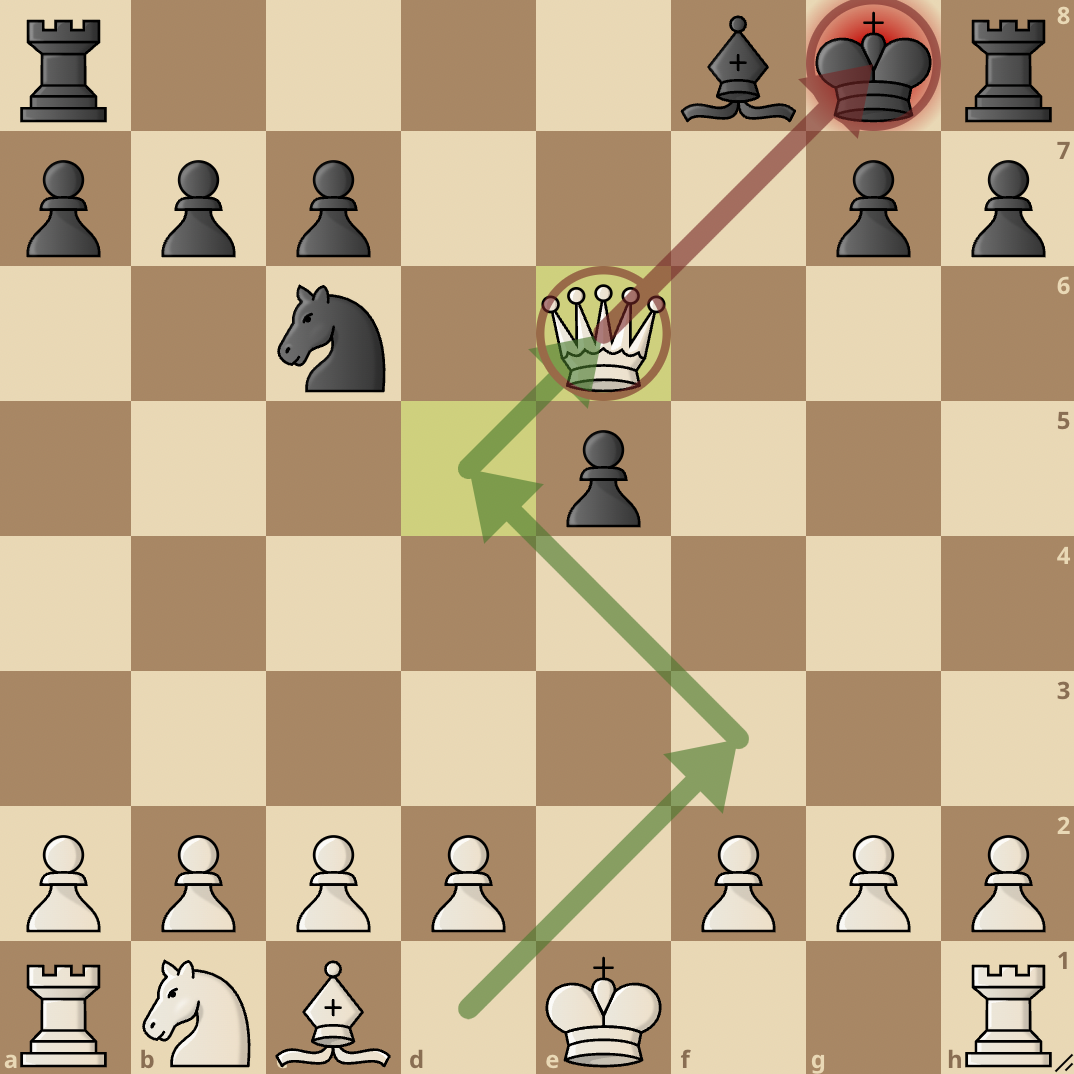
Even if Black does not play 7…Kg8, they will still be in a very uncomfortable position and they will have to be very careful or else they can quickly lose the game.
Successful Deployments
Touch the moves or move the board around for a better interactive experience.
Rudolph Spielmann v Oldrich Duras, Carlsbad 1907
Rudolph Spielmann is regarded as one of the greatest attacking chess players to ever live, and he proved just that in his game against Oldrich Duras where he employed the Italian Game to great effect.
Paul Keres v Guido Karring, Rakvere, Est ch 1934
The Giuoco Piano is known as the quiet game, however, it can spiral into sharp attacking variations and grandmaster Paul Keres gives an excellent display of its attacking prowess in his game against Guido Karring.
Robert James Fischer v Reuben Fine, New York 1963
Fischer put on an excellent showing of the prowess of the Evans Gambit in a 1963 game against Reuben Fine. The game also features a smooth and satisfying finish by Fischer.




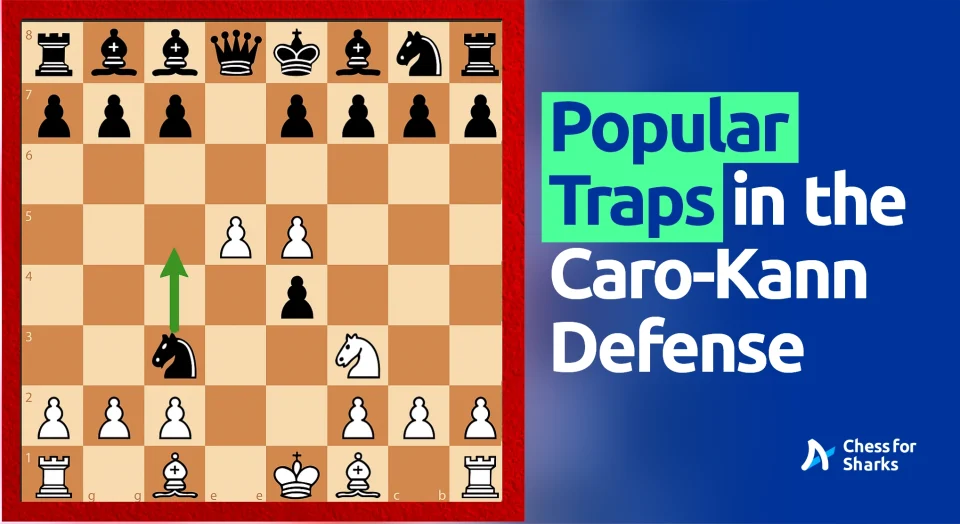

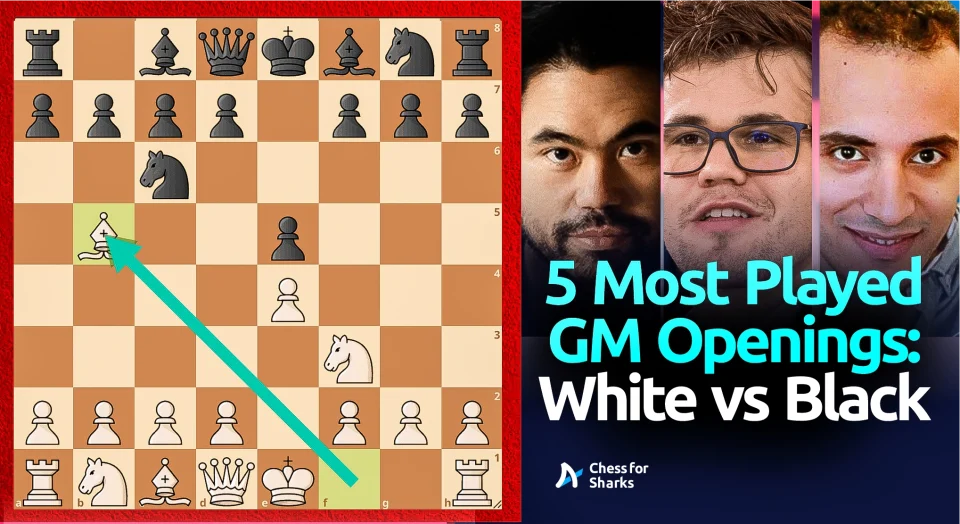
join the conversation